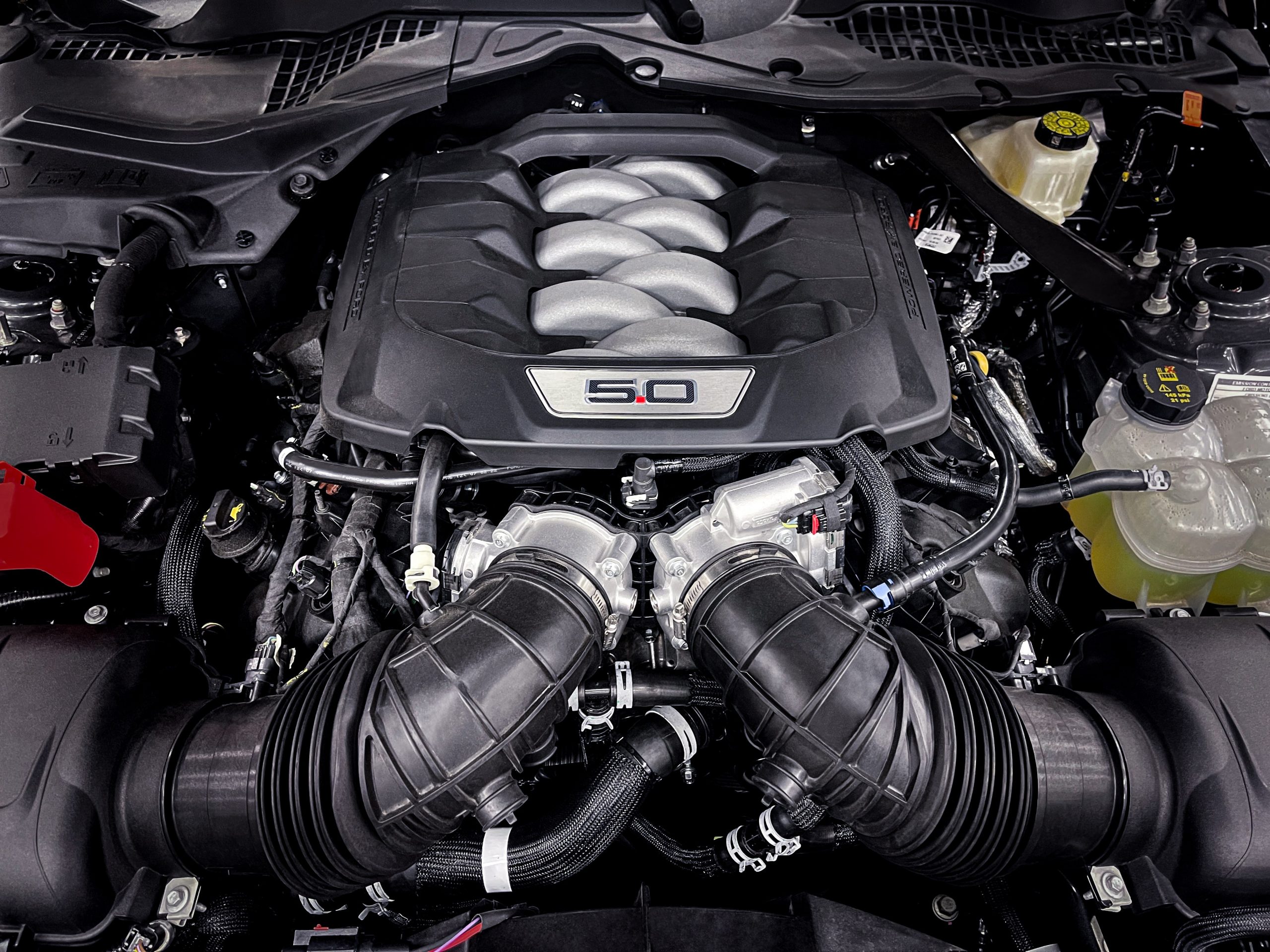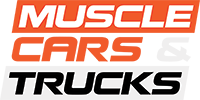What Is The Ford Coyote V8 Engine?
The Ford Coyote engine is a DOHC V8 produced by Ford Motor Company. Over the years, the Coyote engine has expanded to include different variations: a naturally aspirated 5.0L V8, a flat-plane crank 5.2L “Voodoo” V8, and a supercharged 5.2L “Predator” or “Carnivore” V8. Seeing several improvements over the years, the Coyote V8 engine is currently entering its fourth-generation with the S650 Ford Mustang, giving it more power and sophistication than ever before.
History
The Coyote engine was introduced in 2011 as a replacement for the Ford Modular 4.6L and 5.4L Modular OHV V8 engines, which the Coyote is a member of. Splitting the difference between the two displacements, the 5.0L (302 cubic-inches) made a return. The Coyote engine delivers robust power and torque, making it a popular choice among Ford enthusiasts and performance enthusiasts. The initial engine produced 412 horsepower and 390 lb-ft of torque, which was a significant power improvement over the previous Ford Modular V8 engines.
The Coyote V8 first arrived in the fifth-generation Mustang (S197) refresh, answering to the reemergence of a familiar foe: the Chevrolet Camaro that returned for a fifth-generation in the 2010 model year.
The Coyote V8 engine also concurrently debuted in the 2011 Ford F-150. However, there are a few notable differences between the Coyote in the F-150 and the Coyote in the Mustang. Primarily, the 5.0L V8 in the F-150 received a lower compression ratio (10.5:1), intake camshafts with less duration, cast iron exhaust manifolds, and revised cylinder heads to improve cooling. The intake manifold changed only in color, and height. The F-150 Coyote V8 also received an additional oil cooler compared to the S197 Mustang GT, where the Mustang Boss 302 eventually incorporated.
Overall, the changes for the truck prioritized low/mid-range power, as well as an optimized duty cycle for work, instead of outright horsepower and street performance like in the Mustang.

Coyote V8 Design
The Coyote engine was designed with the goal of improving power and efficiency compared to the previous modular engines. The engine features an aluminum block and heads, as well as direct fuel injection, variable valve timing, and high-flow cylinder heads.
Applications
The Ford Coyote V8 engine is currently found exclusively in only the Ford Mustang and Ford F-150 pickup truck. It’s also sold as a crate engine through Ford Performance for $10,575 USD.
Coyote V8 Engine Horsepower And Torque
Ford Mustang
412 hp, 390 lb-ft torque (2011-2012 S197 Mustang GT)
420 hp, 390 lb-ft torque (2013-2014 S197 Mustang GT)
444 hp, 380 lb-ft torque (2012-2013 S197 Mustang Boss 302)
435 hp, 400 lb-ft torque (2015-2017 S550 Mustang GT)
415 hp, 391 lb-ft torque (2015-2017 S550 Mustang GT Export)
444 hp, 393 lb-ft torque (2018-2023 S550 Mustang GT Export)
460 hp, 420 lb-ft torque (2018-2021 S550 Mustang GT)
480 hp, 420 lb-ft torque (2019-2020 S550 Mustang Bullitt)
480 hp, 420 lb-ft torque (2021 S550 Mustang Mach 1)
450 hp, 410 lb-ft torque (2022-2023 S550 Mustang GT)
470 hp, 410 lb-ft torque (2022-2023 S550 Mustang Mach 1)
480 hp, 415 lb-ft torque (2024+ S650 Mustang GT)
486 hp, 418 lb-ft torque (2024+ S650 Mustang GT w/active exhaust)
500 hp, 418 lb-ft torque (2024+ S650 Mustang Dark Horse)
Ford F-150
360 hp, 380 lb-ft torque (2011-2014 F-150 P415)
385 hp, 387 lb-ft torque (2015-2017 F-150 P552)
395 hp, 400 lb-ft torque (2018-2020 F-150 P552)
400 hp, 410 lb-ft torque (2021-2023 F-150 P702)

Production
The Coyote V8 engine is exclusively made in Windsor, Canada at the Essex Engine Plant.
Technical Specs
Displacement: 5.0 liters (302 cubic inches)
Bore: 92.2 mm
Stroke: 92.7 mm
Compression Ratio: 11.0:1
Valvetrain: DOHC, 4-Valves Per Cylinder
Block Material: Aluminum
Cylinder Head Material: Aluminum
Crankshaft: Forged Steel
Ignition System: Direct-Mounted Ignition Coils
Weight: 445 lbs
Direct-mounted ignition coils
High-flow fuel injectors, high-volume oil pump
The Coyote V8 also features Ford’s first implementation of its cam-torque-actuated (CTA) Twin Independent Variable Cam Timing (Ti-VCT) in a V8 engine, which allows the powertrain control module (PCM) to advance and retard intake and exhaust cam timing independently of each other, providing improved power, fuel economy and reduced emissions.
2015 Updates (second-generation)
Changes for the second-generation Coyote V8 were delivered improved airflow and a higher RPM redline. This was made possible by an upgraded intake manifold, with the addition of Charge Motion Control Valves (CMCV). These valves partially close at low-rpm operation, increasing the tumble and swirl characteristics of the air charge. This results in improved air/fuel mixture, which provides better fuel economy and idle stability as well as lower emissions.
This was made possible by larger intake and exhaust valves (37mm intake/31mm exhaust for Gen 1, versus 37.3mm intake/31.8mm exhaust in Gen 2) and increased lobe lift on both the intake and exhaust camshafts (12mm int./exh. in Gen 1, 13mm int./exh. in Gen 2). Variable Cam Timing updates limited camshaft movement from 50 degrees of crankshaft rotation to 25 degrees in order to improve cold-start emissions. The pistons received larger valve reliefs to accommodate the increase in valve diameter. The valvetrain also received stiffer valve springs to reduce the potential of valve float at high rpm. A revised cylinder head casting provided a straighter, less-restrictive path from the intake runner to the combustion chamber. This allowed for freer airflow with the larger valves. The head bolts were also upgraded to 11mm versions, which increased the amount of material in this critical area.
A performance trickle down saw the sinter-forged connecting rods used in the S197 Boss 302 engines became the connecting rods used in the standard Coyote V8 for the Mustang GT, allowing for a higher redline, as well as a rebalanced crankshaft. Gen 2 Coyote V8 engine blocks also see an addition oil-return passage from the filter adapter, compared to the first-generation.
2018 Updates (third-generation)
In the third-generation Coyote V8, Ford added high-pressure direct injection (in addition to the existing port injection system), while the piston bore diameter grew from 92.2 to 93 mm (3.63 to 3.66 in). This increase in the bore size, resulting from the adoption of Plasma Wire Arc Transfer cylinder liner technology in place of the more traditional sleeve in the block, brings total displacement up from 4,951 to 5,035 cc (302 to 307 cu in). Other changes include Gen. 3 Coyote V8 specific camshafts, enlarged intake and exhaust valves, an increased compression ratio of 12.0:1, a revised intake manifold, and 7500 RPM redline in the Mustang. With these changes the updated 5.0L Coyote is rated by Ford at 460 hp (343 kW) and 420 lb⋅ft (569 N⋅m).

2024 Updates (fourth-generation)
Ford Motor Company went ahead and updated what has become one of its most iconic engines: the 5.0L Coyote V8. For the fourth-generation of this DOHC engine, there now exists two 80 mm throttle bodies, along with two air intake boxes. This setup allows for two plenums to feed eight cylinders instead of just one. As a result, the S650 Mustang can breathe in more air than before, which sets off en entire chain of events. More air means there can be more fuel. Which means there can be bigger chambered combustion per cylinder, which means more power. As such, the 2024 Ford Mustang Dark Horse can deliver 500 horsepower, marking 100 naturally aspirated horses per liter.
Adding to the upgrades on the fourth-generation Coyote V8 are camshafts that have been given more lift on the exhaust valves, allowing for the spent charge to more easily exit the chamber. In addition, the left-side exhaust manifold has been reworked to increase flow and reduce interference.
With more power, engines also produce more heat. Which means that they need improved cooling in order to maintain performance. Therefore, along with a standard oil cooler, Ford has also redesigned the oil pan to reduce windage (the flow of air in the crankcase), in turn creating a reduction in unwanted pressure that restricts piston speed.




